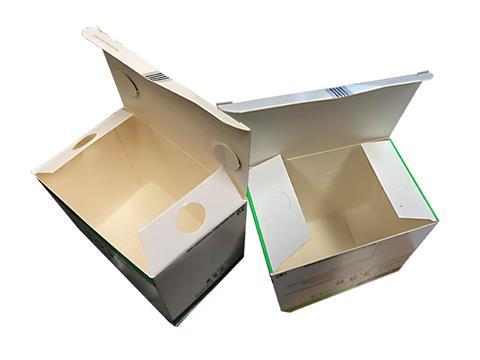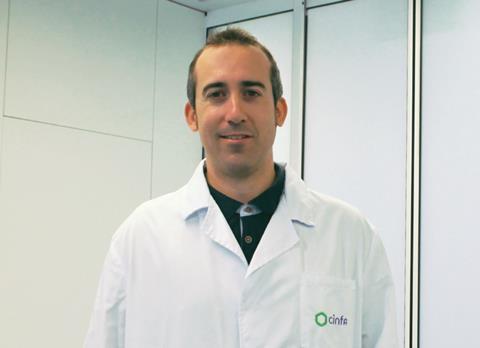
The Falsified Medicines Directive, coming into force in February, requires European pharmaceutical manufacturers to adapt their packaging lines to guarantee that every box is safely closed until it reaches the consumer's hands. Cinfa – the Spanish-based pharma giant – spoke to Packaging Europe about its reading of the demands of the FMD and tamper evidence, and their recent collaboration with Valco Melton.
Javier Gorriti, production engineer at Cinfa:
Thanks to tamper evident packaging, we achieve a relevant quality leap: we guarantee that the patient receives a secure product that has not been manipulated, what can affect the quality of the medicine. This solution has been already implemented alongside other markets for long time and it was absolutely necessary for the pharmaceutical industry, where quality is a priority.

At Cinfa we have pursued a solution that does not modify the final product but meets the requirements of the FMD regarding tamper evidence and serialisation. We are really involved in this project since a large range of our medicines are affected by this new law. We have been looking into new technologies that could guarantee not only the security of our products, but also the threat of counterfeiting. I guess we can say we opted for the best option to meet the 9 February deadline successfully.
The adaptation to the tamper evidence requirements has had big implications for us since it affects all the production lines of our company. It has been necessary either to purchase new packaging machines or to update our current ones. Furthermore, we had to acquire hot melt equipment for all our production lines, since we changed from a tuck-in closure to a hot melt sealing.
Performance criteria
As might be expected, after the implementation of new technologies, there is an adaptation period. We are pleasantly surprised by how far we got familiarised with this hot melt technology. In this respect, breakthroughs in recent years have been key, such as the reduction in the size of melting tanks or the improvement in adhesive handling, avoiding degradation, debris and the loss of its properties. Another improvement would be the adhesive autofeeder, which avoids manual filling, stops and heating time. Besides, the implementation of electric guns represents big progress compared to the pneumatic ones, offering an accurate adhesive application and reducing noise.
The main benefit of a hot melt tamper evidence solution for us is that the installation of this technology does not require a large space and long production stops. Working with hot melt avoids the need of extending the production line, which is a crucial factor. Pharmaceutical medicine production and packaging entail various requirements around temperature, humidity, air filtering, etc. The maintenance of these installations is complex and, in this respect, space optimisation is imperative. In addition, hot melt reports less production stops in comparison with alternative technologies, which require spare parts replacement and cause more incidents.
Based on this experience, I would predict that this tamper evidence technology will eventually migrate to other markets beyond pharmaceutical and medical products. It is mainly applicable to those which involve valuable products because it provides added security and guarantees that the product is original and has not been manipulated.
Collaboration
Cinfa ultimately adopted Valco Melton’s cutting edge hot melt tamper technology, extending a partnership that had existed for several years. Valco’s new complete solution consists in the Kube melt-on-demand demand unit, which promotes adhesive stability and reduce char by only melting adhesive as it is required, and an EcoStitch™ all-electric hot melt applicator, which produces accurate adhesive dot patterns and reduces adhesive usage by up to 75 per cent. Combined with the VD2 controller, adhesive patterns can be easily customised and controlled. To ensure a faultless delivery, the PackChek Vision Inspection System checks the correct placement and length of every glue bead and reports any error.
Ramon Torredemer, sales representative at Valco Melton, takes up the story:
A lot of solutions have emerged to tackle the challenge of adapting to the new pharmaceutical industry requirements. Most of them are existing technologies that used to be cumbersome, voluminous and expensive. They are cumbersome because they imply more installation time, and an external technician cost is very expensive. Voluminous since they occupy a big space in completely fitted lines. And they are expensive because all this big and specialised ancillary equipment comes with significant additional cost! Fitting, for example, a new self-adhesive labelling machine in a production line would lead to these problems.

In this context, Valco Melton has launched an anti-counterfeit solution based on our traditional hot melt technology. But our alternative does not lead to the above-mentioned drawbacks. The pharmaceutical packaging systems already feature a hot melt sealing machine. Therefore this system is not completely new for the packager. Our system is not voluminous and can be installed inside an existing machine without requiring more space. Our solution it is not expensive, when we compare price and life cycle with other technologies.
The point of our electric guns is that they can operate at extremely high speeds. In contrast to pneumatic guns, our all electric guns operate at extremely higher speeds with a life cycle of up to 500 times greater than their pneumatic counterparts and they can easily be installed. Electric gear pumps and valves remove all but one dynamic seal required to run a pneumatic system. This fact minimises the chance of failure and greatly reduces downtime and the need for maintenance. In addition, our adhesive melters do not require a big melting tank. Our revolutionary Kube is available in three different mount configurations and can be easily installed anywhere inside the production line.















